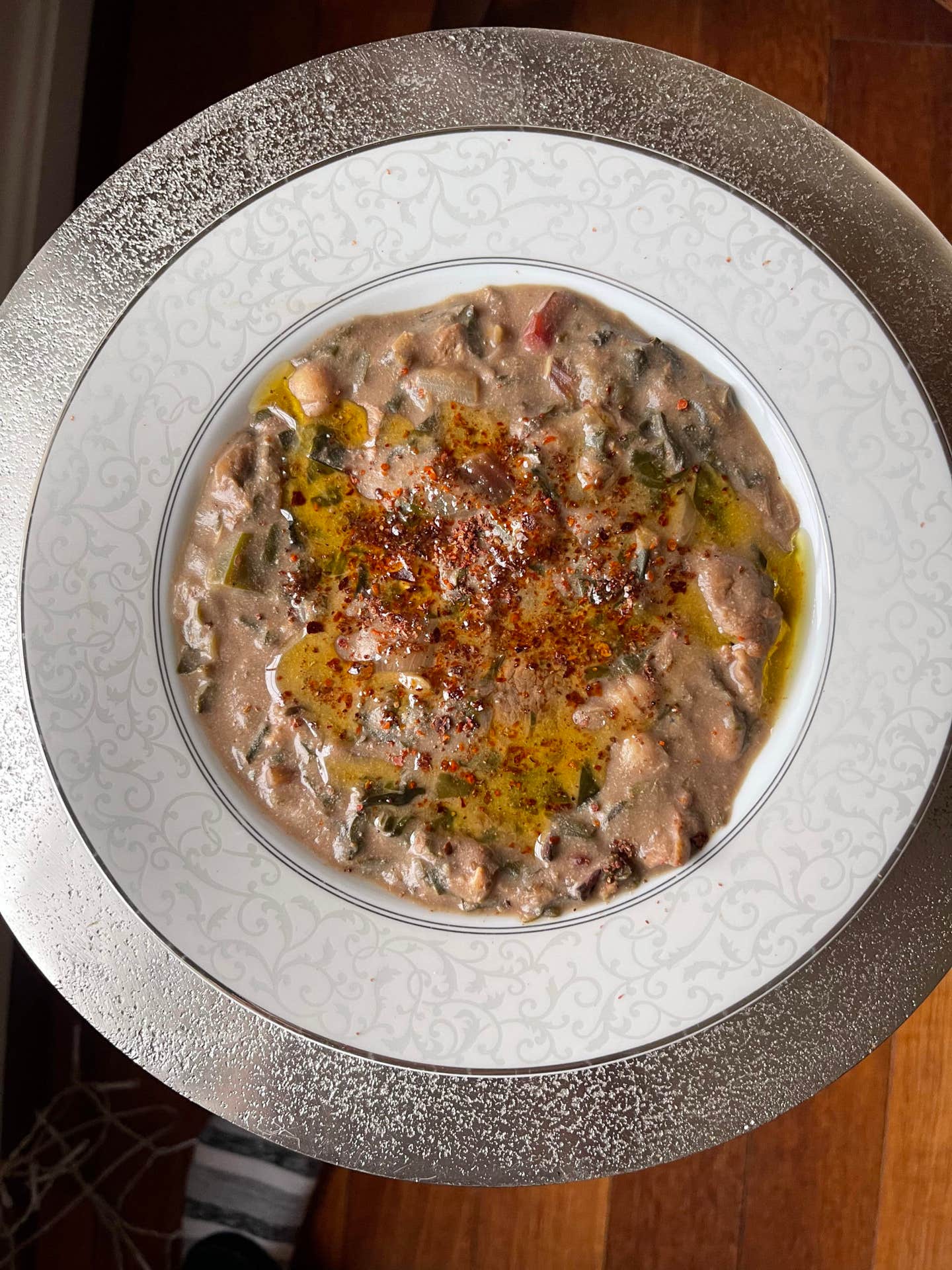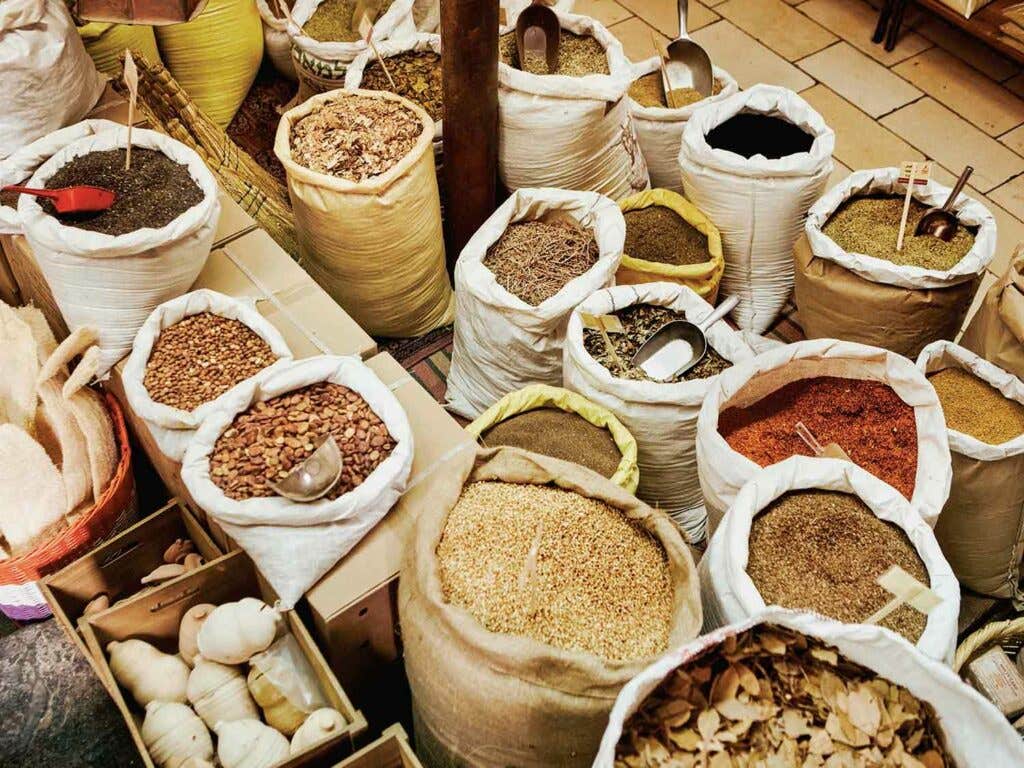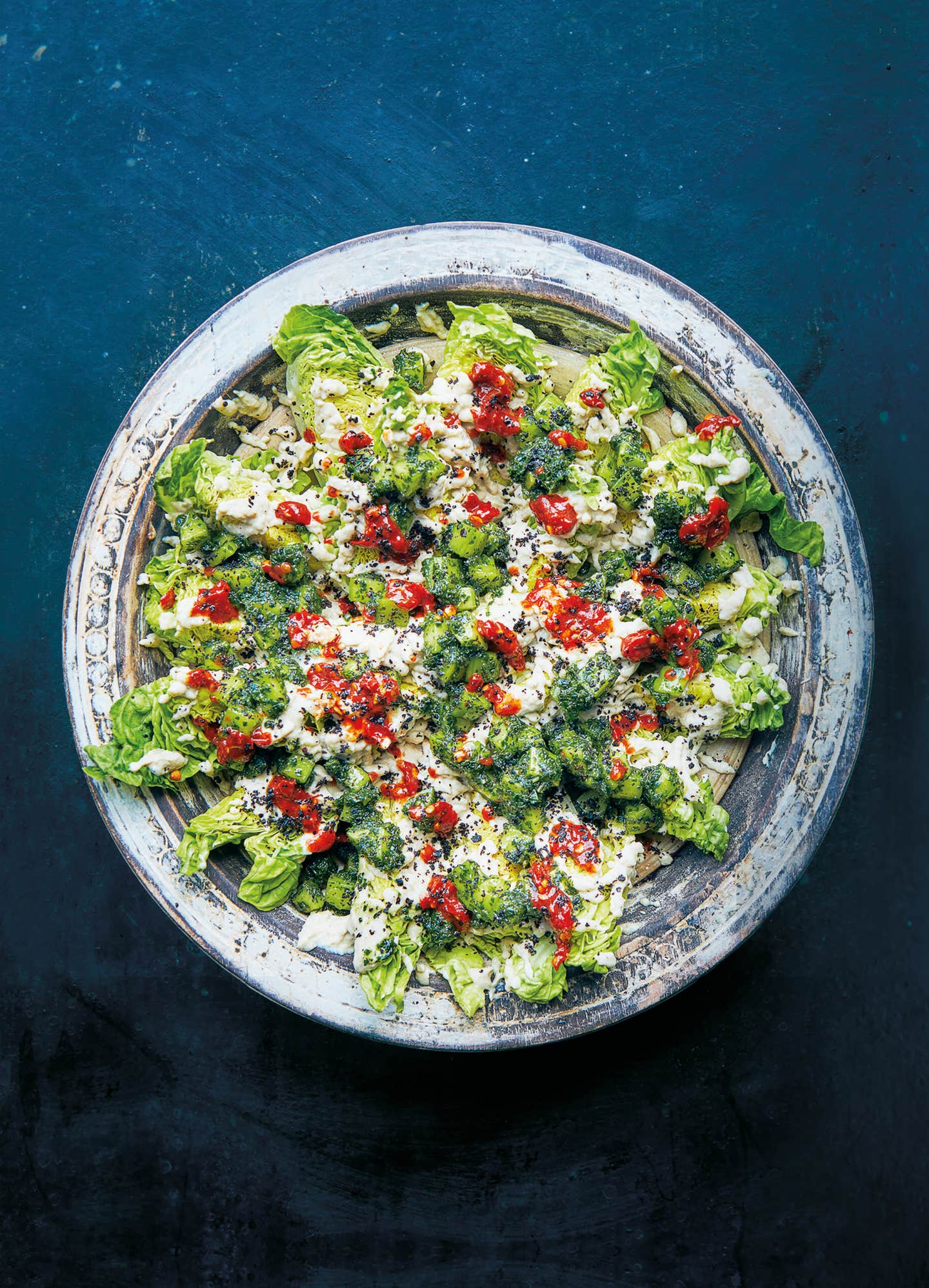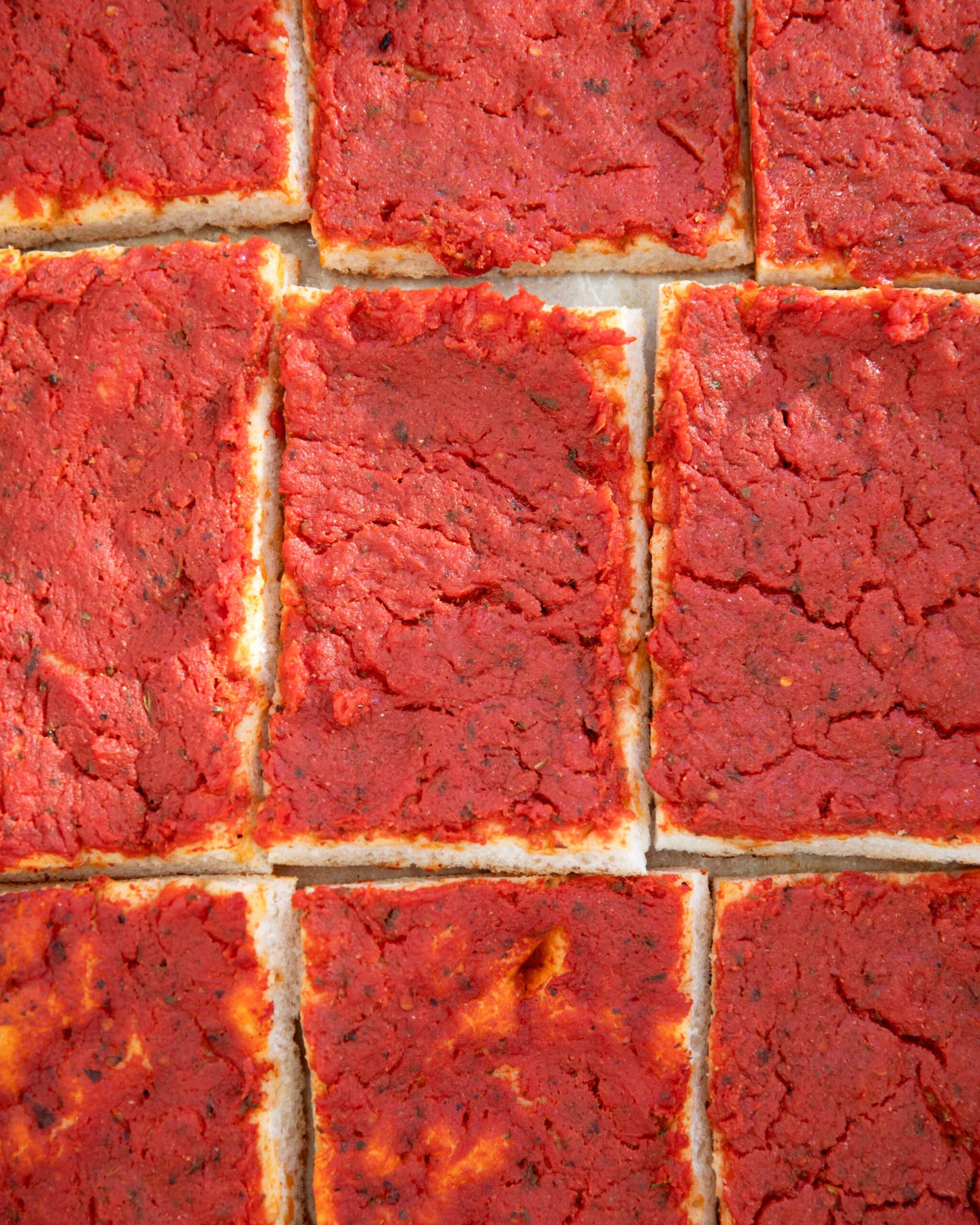Palestinian Lamb Stew with Sumac, Chard, and Chickpeas
Sumagiyya is celebration food in Gaza. For cookbook author Laila El-Haddad, making it is an act of affirmation.
- Serves
8
- Time
3 hours

This sumagiyya recipe is a tribute to my aunt, An’am Dalloul, who was killed in an Israeli airstrike in November 2023. She was known in my family for this traditional Gazan stew brimming with lamb, chickpeas, and chard, which she’d often make for Eid.
While any variety of chard will do, rainbow chard will lend the finished dish a nice pinkish hue. Whole sumac berries can be purchased online (if unavailable, substitute ground sumac in step 2 and bring only to a simmer before steeping; do not strain). Roasted tahina (aka red tahina or tahina hamra), which has a deep, nutty flavor, can be found at some specialty grocers, though regular tahini can be used in its place. If you have a low tolerance for heat, seed the chiles. Sumagiyya is wonderful served with olives, sliced radishes, red chile paste, warm Arabic bread, and assorted pickles.
Featured in “A Cuisine Under Siege” by Laila El-Haddad.
Ingredients
For the broth:
- 1½ lb. boneless leg of lamb, cut into 1-in. pieces
- 1 tsp. whole allspice berries
- 1 tsp. black peppercorns
- 5 green cardamom pods
- 1 bay leaf
- 1 cinnamon stick
- 1 medium yellow onion, coarsely chopped
For the stew:
- ½ cup sumac berries, or ⅓ cup ground (see headnote)
- 3 Tbsp. all-purpose flour
- 2 Tbsp. extra-virgin olive oil, plus more for serving
- 1 medium yellow onion, chopped
- 1 lb. rainbow chard, thick stems discarded, sliced into ¼-in.-thick ribbons
- One 15-oz. can chickpeas, drained, or 1½ cups cooked dried chickpeas
- Fine salt
- 1 Tbsp. dill seeds
- 1½ tsp. crushed red chile flakes
- 5 garlic cloves
- 2 green chile peppers, such as serrano, finely chopped (see headnote)
- 2 Tbsp. coarsely ground sumac, preferably Al-Ard brand, plus more for garnish
- 1 tsp. ground coriander seeds
- 3 Tbsp. roasted sesame tahini, or regular tahini (see headnote)
- Ground Aleppo pepper (optional) and sumac, for serving
Instructions
Step 1
Step 2
Step 3
Step 4
Step 5
Step 6
- Make the broth: In a large pot, cover the meat with 8 cups of water and bring to a boil, skimming any scum that rises to the surface. Add the allspice, peppercorns, cardamom, bay leaf, cinnamon stick, and onion. Turn the heat down to maintain a strong simmer and cook until the lamb is tender, about 2 hours. Place a strainer over a large bowl and strain, reserving the meat and broth and discarding the spices. Wipe out the pot and return it to the stove.
- Make the stew: In a small bowl of water, swish the sumac berries with your hands to remove any grit. Using a slotted spoon, transfer them to a saucepan and cover with 3 cups of water. Bring to a boil and continue boiling until the liquid has reduced by about half (the berries will not soften), about 10 minutes. Remove from the heat and set aside to steep until lukewarm, about 30 minutes. Strain into a small bowl and discard the berries. Whisk in the flour until smooth.
- To the empty pot, add the oil and onion and turn the heat to medium. Cook, stirring occasionally, until soft and beginning to brown, 7–9 minutes. Stir in the chard and cook until bright green and wilted slightly, about 5 minutes. Add 1 teaspoon of salt, the chickpeas, and reserved broth and lamb and bring to a boil. Lower the heat to maintain a simmer and cook for 10 minutes more.
- Meanwhile, using a mortar and pestle, coarsely grind together the dill seeds, chile flakes, and ½ teaspoon of salt. Add the garlic cloves and green chiles and pound to a coarse paste. Stir the paste into the stew along with the ground sumac, coriander, and sumac-flour mixture.
- Return the stew to a simmer. In a bowl, whisk together a ladleful of the broth and the tahini, then stir the mixture into the stew and simmer until thickened slightly, 3–5 minutes.
- To serve, ladle the stew into serving bowls and serve warm or at room temperature topped with Aleppo pepper (if desired), sumac, and a drizzle of oil.


Keep Reading
Continue to Next Story










